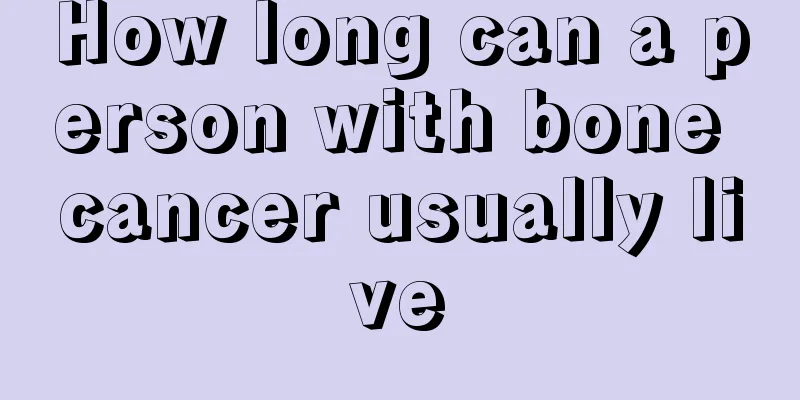What are the evidences for identifying cholangiocarcinoma

|
Because the early symptoms of bile duct cancer are relatively hidden and difficult to detect, it is easy to be ignored and misdiagnosed, thus missing the best time for treatment, which makes the harm more serious. In addition, when it is discovered, it is often in the middle and late stages, and cancer cells are easy to invade blood vessels and nerve tissues, making treatment difficult. So what are the bases for identifying bile duct cancer? In general, although jaundice is an obvious symptom of this disease, it is often difficult to diagnose correctly. It is easy to be confused with common bile duct stones. In particular, it is not easy to make a clear diagnosis before the onset of jaundice. It is often necessary to conduct a comprehensive and careful examination and analysis of patients with upper abdominal pain or obstructive jaundice to make a more correct diagnosis. Sometimes, the truth can only be determined after laparotomy. According to previous literature statistics, only one-third of the cases were correctly diagnosed before surgery. However, in recent years, with the development and improvement of imaging diagnostic technology, the correct preoperative diagnosis rate has greatly increased. It is important to select the appropriate examination in time for suspicious patients, so that the disease can be diagnosed and treated earlier. Patients over 40 years old with jaundice, or digestive symptoms such as unexplained upper abdominal discomfort, bloating, and poor appetite, or liver enlargement with or without gallbladder enlargement should be suspected of cholangiocarcinoma and further examinations such as ultrasound, CT, MRI, ERCP, endoscopic ultrasound, choledochoscopy, PTC, hypotonic duodenography, or selective angiography should be performed to confirm the diagnosis. Cholangiocarcinoma can be initially diagnosed and differentiated by combining clinical manifestations, laboratory tests, and imaging examinations. 1. Serum CAl9-9 is helpful for diagnosis, especially for intrahepatic cholangiocarcinoma evolved from primary sclerosing cholangitis. In most patients with extrahepatic cholangiocarcinoma, total bilirubin (TBIL), direct bilirubin (DBIL), alkaline phosphatase (ALP) and γ-glutamyl transferase (γ-GT) are significantly elevated, which is the most important laboratory manifestation, while transaminase ALT and AST are generally only slightly abnormal. This imbalance of bilirubin and transaminase elevation helps to differentiate from viral hepatitis. Prolonged prothrombin time. 2. CT: It provides similar effects to ultrasound and clearer three-dimensional tomographic images. Ultrasound imaging is usually used as the first-line examination method in clinical practice, and CT scanning is used for cases that require further examination. In addition, dual-source CT vascular imaging of abdominal vessels can not only directly detect tumors, but also has important significance for the preoperative assessment of resectability of bile duct cancer and the selection of surgical methods. 3. Ultrasound imaging (B-US) examination: It is a simple, fast, accurate and low-cost examination. Through ultrasound examination, the following can be obtained: ① dilatation of the intrahepatic bile duct, proving the obstruction of the bile duct; ② the site of obstruction is in the bile duct, but in a few cases, the lesions at the distal end of the common bile duct are difficult to show due to obesity, intestinal gas or other operations in the past; ③ the nature of the bile duct obstruction lesions. Therefore, ultrasound examination is the preferred examination method for patients with obstructive jaundice. Ultrasound imaging can directly detect tumors in intrahepatic bile duct cancer, but it is generally difficult to directly detect tumors in extrahepatic bile duct cancer. However, the location of the tumor can be inferred based on the dilation of the intrahepatic and extrahepatic bile duct trees. If ultrasound imaging shows dilation of the intrahepatic bile duct and normal extrahepatic bile duct and a small gallbladder, it means that the obstruction is in the hilar part of the liver, suggesting the possibility of hilar bile duct cancer; if the intrahepatic and extrahepatic bile ducts are dilated with an enlarged gallbladder, it means that the obstruction is in the middle and lower bile ducts, suggesting a diagnosis of middle and lower bile duct cancer. 4. Color Doppler ultrasound examination: It can also provide information about whether the portal vein and hepatic artery are invaded, which helps to evaluate the resectability of the tumor. Endoscopic ultrasound is a technology developed in recent years. Because it avoids the interference of intestinal gas and uses a high-frequency ultrasound probe, it can show extrahepatic bile duct tumors more clearly and accurately. Its accuracy in judging the depth of infiltration of middle and lower bile duct cancer and hilar bile duct cancer can reach 82.8% and 85% respectively. In addition, it can also help to determine whether regional lymph nodes have metastasized. Under ultrasound guidance, it is also possible to perform exfoliated cell examination of bile at the obstruction site and histological examination of direct puncture of the lesion tissue, but the positive rate of the former is only 58%, and the latter can reach 74%. The differential diagnosis should take into account other causes of extrahepatic and intrahepatic cholestatic jaundice. Common bile duct stones are characterized by paroxysmal partial obstruction, accompanied by the unique triad of cholelithiasis (jaundice, abdominal pain, and fever); while malignant obstructive jaundice is generally painless and progressive jaundice. In obstruction caused by stones, bilirubin rarely exceeds 150 mg/L and is usually below 100 mg/L. Malignant tumors at the lower end of the common bile duct are often accompanied by gallbladder enlargement, while stone obstruction is less common. |
<<: What drugs can treat bile duct cancer
>>: How should patients with bile duct cancer exercise
Recommend
Can B-ultrasound rule out endometrial cancer? It cannot be ruled out
B-ultrasound cannot rule out endometrial cancer. ...
What can be used to wash off latex paint
Latex paint is generally not easy to clean, but s...
Is it true that you won’t get pregnant if you have sex after taking birth control pills during the ovulation period?
Because unexpected pregnancies are so common, and...
Remove lip melanin, 3 secrets show amazing effects
Every girl wants to have the most beautiful face,...
Early body reactions to melanoma
Each of us has more or less moles on our body, an...
How to remove chickenpox scars
I believe that chickenpox is a common thing for e...
Can I eat ginger if I have gastritis?
Many people suffer from gastritis nowadays. Gastr...
Food Allergy Symptoms
There are many common problems in life. Diseases ...
Is sodium chloride normal saline?
Normal saline is a very common thing in daily lif...
What is the correct way to clean dentures?
Many middle-aged and elderly people use dentures ...
Arsenic poisoning symptoms
Arsenic is one of the oldest poisons used since a...
What are the symptoms of advanced lung cancer? The three most obvious symptoms of advanced lung cancer
What are the symptoms of advanced lung cancer? Lu...
Special considerations for preventing lymphoma in children and adolescents
Although the causes of lymphoma in children and a...
Are resin cups harmful to the body?
Resin cups are a new type of cup that is now rela...
Can table salt be used to wash the vulva?
The structure of a woman's vulva is relativel...









